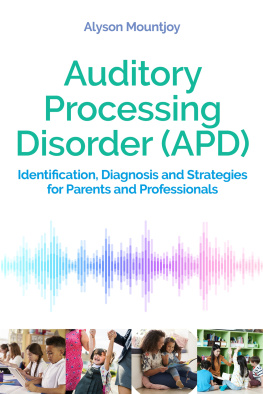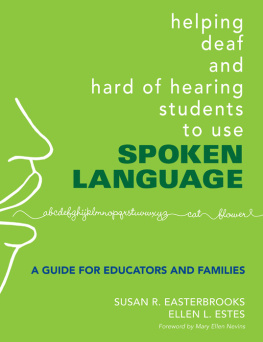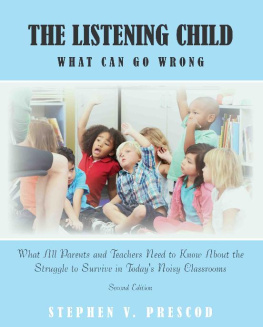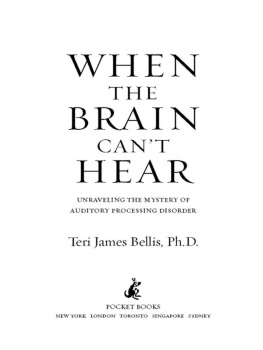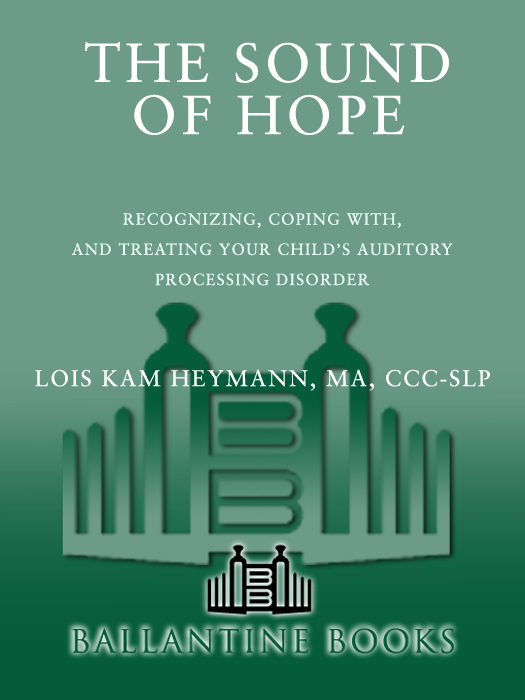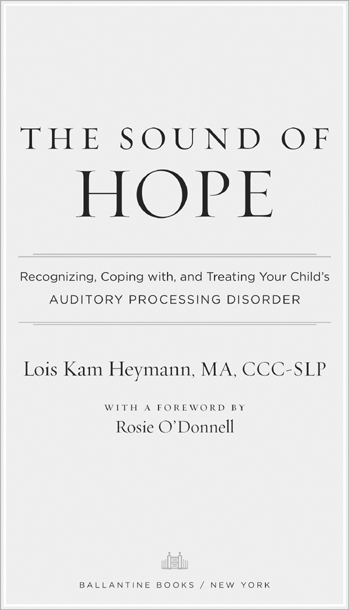Lois Kam Heymann - The Sound of Hope: Recognizing, Coping with, and Treating Your Childs Auditory Processing Disorder
Here you can read online Lois Kam Heymann - The Sound of Hope: Recognizing, Coping with, and Treating Your Childs Auditory Processing Disorder full text of the book (entire story) in english for free. Download pdf and epub, get meaning, cover and reviews about this ebook. year: 2010, publisher: Random House Publishing Group, genre: Children. Description of the work, (preface) as well as reviews are available. Best literature library LitArk.com created for fans of good reading and offers a wide selection of genres:
Romance novel
Science fiction
Adventure
Detective
Science
History
Home and family
Prose
Art
Politics
Computer
Non-fiction
Religion
Business
Children
Humor
Choose a favorite category and find really read worthwhile books. Enjoy immersion in the world of imagination, feel the emotions of the characters or learn something new for yourself, make an fascinating discovery.

- Book:The Sound of Hope: Recognizing, Coping with, and Treating Your Childs Auditory Processing Disorder
- Author:
- Publisher:Random House Publishing Group
- Genre:
- Year:2010
- Rating:4 / 5
- Favourites:Add to favourites
- Your mark:
The Sound of Hope: Recognizing, Coping with, and Treating Your Childs Auditory Processing Disorder: summary, description and annotation
We offer to read an annotation, description, summary or preface (depends on what the author of the book "The Sound of Hope: Recognizing, Coping with, and Treating Your Childs Auditory Processing Disorder" wrote himself). If you haven't found the necessary information about the book — write in the comments, we will try to find it.
A miraculous process that begins in the womb, learning to communicate is a vital part of expressing oneself and of understanding and interacting with the world. A childs ability to listen well affects every aspect of his or her life. But for some 1.5 million children in the United States who have normal hearing and intelligence, communication and language are blocked. Words are jumbled and distorted. These children have a hard time following directions and become frustrated in trying to make themselves understood, which often leads to unruly behavior, poor school performance, social isolation, and low self-esteem.
Auditory Processing Disorder (APD) affects the brains ability to accurately process the sounds of speech, which in turn impedes the ability to communicate. Experts are just beginning to unlock the mystery of this confounding condition. As a result, APD is often undiagnosed or misdiagnosed. But hope is here. Now veteran speech-language pathologist Lois Kam Heymann offers the first practical guide to help parents dramatically improve the listening and language skills of their children, whether they have a diagnosed auditory processing disorder, slow language developmentor simply need practice listening. Inside this reassuring, action-oriented book youll find
easy-to-identify milestones to help parents pinpoint challenges that may arise during each stage of their childs development from birth to age eight
the tools and checklists needed to assist parents in recognizing APD early
tips to distinguish APD from other listening/learning disorders, including ADD, ADHD, LPD, and PDD
methods to encourage a childs natural listening abilities through books, stories, nursery rhymes, songs, lullabies, toys, and games
home techniques to hone a childs auditory processingwhether he or she has severe APD limitations or just needs to build listening muscles
specific suggestions on how to improve a childs listening skills outside the homeat school, during after-school activities, even when at a restaurant
an analysis of traditional classroom settings and effective ways parents can advocate for better sound quality
guidelines for finding the right professionals to work with your child
With hands-on ways for improving a childs ability to listen to instructions, process information, and follow directions, parents can turn simple activities into powerful listening lessons in only minutes a day. The bottom line: Learning how to listen in our noisy, complicated world is the key to a happy and engaged child.
Lois Kam Heymann: author's other books
Who wrote The Sound of Hope: Recognizing, Coping with, and Treating Your Childs Auditory Processing Disorder? Find out the surname, the name of the author of the book and a list of all author's works by series.

